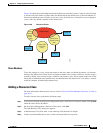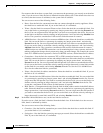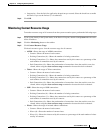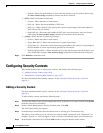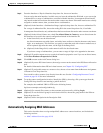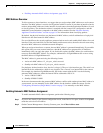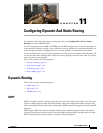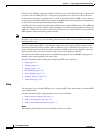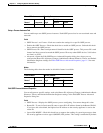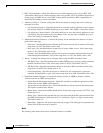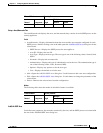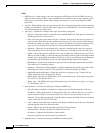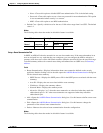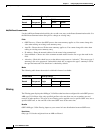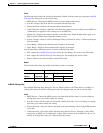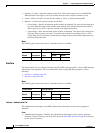
11-3
Cisco ASDM User Guide
OL-16647-01
Chapter 11 Configuring Dynamic And Static Routing
Dynamic Routing
Setup > Process Instances Tab
You can enable up to two OSPF process instances. Each OSPF process has its own associated areas and
networks.
Fields
• OSPF Process 1 and 2 areas—Each area contains the settings for a specific OSPF process.
• Enable this OSPF Process—Check the check box to enable an OSPF process. Uncheck this check
box to remove the OSPF process.
• OSPF Process ID—Enter a unique numeric identifier for the OSPF process. This process ID is used
internal and does not need to match the OSPF process ID on any other OSPF devices. Valid values
are from 1 to 65535.
• Advanced—Opens the Edit OSPF Process Advanced Properties dialog box, where you can
configure the Router ID, Adjacency Changes, Administrative Route Distances, Timers, and Default
Information Originate settings. See Edit OSPF Process Advanced Properties, page 11-3 for more
information.
Modes
The following table shows the modes in which this feature is available:
Edit OSPF Process Advanced Properties
You can edit process-specific settings, such as the Router ID, Adjacency Changes, Administrative Route
Distances, Timers, and Default Information Originate settings, in the Edit OSPF Process Advanced
Properties dialog box.
Fields
• OSPF Process—Displays the OSPF process you are configuring. You cannot change this value.
• Router ID—To used a fixed router ID, enter a router ID in IP address format in the Router ID field.
If you leave this value blank, the highest-level IP address on the security appliance is used as the
router ID.
• Ignore LSA MOSPF—Check this check box to suppress the sending of system log messages when
the security appliance receives type 6 (MOSPF) LSA packets. This setting is unchecked by default.
Firewall Mode Security Context
Routed Transparent Single
Multiple
Context System
• — • ——
Firewall Mode Security Context
Routed Transparent Single
Multiple
Context System
• — • ——



